Role of transfusions in the development of hospital-acquired UTI
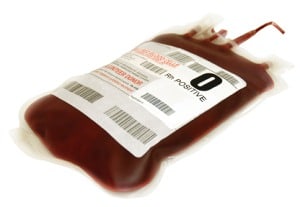
Urinary tract–related bloodstream infection (BSI) is associated with substantial morbidity, mortality, and financial costs. We examined the role of red blood cell (RBC) transfusions on developing this condition among US Veterans” Greene et al (2018). Reference: Background: Urinary tract–related bloodstream infection (BSI) is associated with substantial morbidity, mortality, and financial costs. We examined the role […]
Central venous catheter-related venous thrombosis in children

In this review, we focus on CVC-related VTE in children with end-stage renal disease (ESRD) undergoing hemodialysis, a population in whom the provision of renal replacement therapy is a lifelong undertaking” Mandel-Shorer et al (2018). Abstract: Despite the high rate of central venous catheter (CVC)-related venous thromboembolic (VTE) complications and long-term sequelae, CVCs remain a […]
Central venous occlusive disease in patients with end-stage renal disease
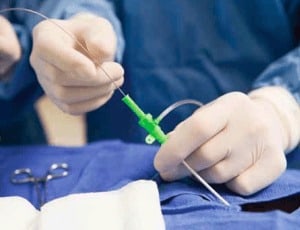
Central venous occlusive disease is frequently observed in patients with end-stage renal disease” McFall and Lu (2018). Abstract: Central venous occlusive disease is frequently observed in patients with end-stage renal disease. Venography remains the gold standard for diagnosis, but intravascular ultrasound is a potentially beneficial adjunct that may positively influence intervention. You may also be […]
Maintaining lower limb access with the HeRO device

Central venous catheters (CVC) remain a mainstay of vascular access particularly for incident patients, but lead to central vein stenosis (CVS) in up to 1 in 6 patents” Madurska et al (2018). Abstract: Central venous catheters (CVC) remain a mainstay of vascular access particularly for incident patients, but lead to central vein stenosis (CVS) in up […]
Effect of central venous catheter priming with calcium during CRRT

During citrate-based Continuous Renal Replacement Therapy (CRRT), an infusion of calcium is necessary to replace the calcium lost in the effluent. The replacement takes place through a central venous catheter (CVC) that is primed with saline solution” Roveri et al (2018). Abstract: During citrate-based Continuous Renal Replacement Therapy (CRRT), an infusion of calcium is necessary […]
Options for difficult central venous cannulation insertion?
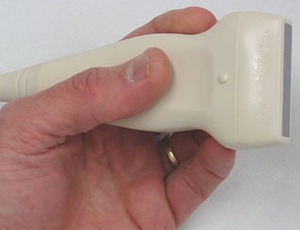
A commonly encountered difficulty during US-guided cannulation is the small lumen of the vessel (especially internal jugular vein) in patients who are volume deficient or have a history of multiple cannulations” Dhiman et al (2018). Extract: “A commonly encountered difficulty during US-guided cannulation is the small lumen of the vessel (especially internal jugular vein) in […]
Evaluation of oral anticoagulants for the treatment of cancer-associated thrombosis

Cancer is associated with an increased risk of venous thromboembolism of four to sixfold. Cancer-related interventions such as chemotherapy, hormonal therapy and indwelling central venous catheters also increase the risk of venous thromboembolism” Franco-Moreno et al (2018). Abstract: Cancer is associated with an increased risk of venous thromboembolism of four to sixfold. Cancer-related interventions such […]
Impact on mortality of time of central catheter removal in candidemia

Evaluate the effect of time to CVC removal, early (within 48h from the diagnosis of candidemia) vs. removal at any time during the course of candidemia, on the 30-day mortality” Nucci et al (2018). Abstract: BACKGROUND: The impact of central venous catheter (CVC) removal on the outcome of patients with candidemia is controversial, with studies […]
Review of interhospital transfer of children in septic shock

To determine the factors that influence the decision to transfer children in septic shock from level II to level I pediatric intensive care unit (PICU) care” Odetola et al (2018). Abstract OBJECTIVE: To determine the factors that influence the decision to transfer children in septic shock from level II to level I pediatric intensive care […]
Safety interventions lower radiation doses during central venous line placement in children
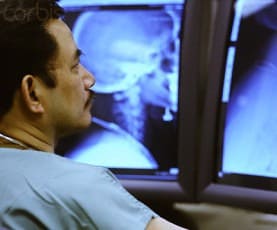
The purpose of this study was to reduce radiation exposure during pediatric central venous line (CVL) placement by implementing a radiation safety process including a radiation safety briefing and a job-instruction model with a preradiation time-out” Choi et al (2018). Abstract: PURPOSE: The purpose of this study was to reduce radiation exposure during pediatric central […]
Ultrasound peripheral IV catheter insertion reduces central line placement

Our primary objective was to determine the proportion of patients that required CVC after USPIV. Our secondary objective was to determine if classic risk factors for difficult vascular access were predictive of future CVC placement” Pare et al (2018). Abstract: Objectives: Ultrasound guided peripheral intravenous catheters (USPIV) are frequently utilized in the Emergency Department (ED) […]
What are the main reasons for rejection of haematology phlebotomy specimens?

The aim of this study was to determine the frequency and reasons for rejected haematology specimens, preanalytical variables which may affect specimen quality, and consequences of rejection, and provide suggestions on monitoring quality indicators as to obtain a quality improvement” Ye et al (2018). Abstract: INTRODUCTION: Specimen adequacy is a crucial preanalytical factor affecting accuracy […]
Increased mortality and adverse events in older blood transfused trauma patients

The transfusion of older packed RBCs may be harmful in critically ill patients. We seek to determine the association between packed RBC age and mortality among trauma patients requiring massive packed RBC transfusion” Jones et al (2018). Abstract: Study objective: The transfusion of older packed RBCs may be harmful in critically ill patients. We seek […]
Review of ultrasonography in Italian anesthesiology

The appropriate training in the use of ultrasound in anesthesia, intensive-care medicine, and pain therapy should be implemented in south of Italy to make uniform the widespread of ultrasonography in anesthesia, in all Italian regions” Fusco et al (2018). Abstract: PURPOSE: In recent years, ultrasound has seen a rapid development with numerous applications in anesthesia, […]
Reducing need for PICC placement with short course IV antibiotics

Post-cholecystostomy outcomes were comparable between short-course and long-course antibiotics, consistent with emerging literature supporting short-course antibiotics for intra-abdominal infection with source control” Walker et al (2018). Abstract: BACKGROUND: Current guidelines do not specifically address optimal antibiotic duration following cholecystostomy. This study compares outcomes for short-course (
What are the compliance rates with IV smart pump drug libraries

Our findings support that there are differences in IV smart pump compliance both within and between hospital systems and that IV smart pump type and the number of drug library profiles may be influencing factors” Giuliano et al (2018). Reference: Background: Although intravenous (IV) smart pumps with built-in dose-error reduction systems (DERS) can reduce IV […]
Transjugular retrieval of a knotted peripherally inserted central venous catheter

Knotting of intravascular catheters has been well described, and all such cases documented in the literature have occurred during catheter insertion” Zhou et al (2018). Abstract: Knotting of intravascular catheters has been well described, and all such cases documented in the literature have occurred during catheter insertion. Knot formation has not been reported during the […]
Repair or replace fractured pediatric central venous catheters
Central venous catheter (CVC) fracture is a common complication. The aim of this study is to examine risk factors resulting in CVC fracture and compare outcomes of children undergoing CVC repair versus replacement” Zens et al (2018). Abstract: INTRODUCTION: Central venous catheter (CVC) fracture is a common complication. The aim of this study is to […]
Is fluoroscopy necessary for central venous port placement?

The aim of this study is to determine whether intraoperative fluoroscopy (IF) is required to confirm the correct position of the catheter tip in children” Dore et al (2018). Abstract: INTRODUCTION: Central venous port (CVP) placement is traditionally performed under fluoroscopy guidance. However, efforts for radiation dose reduction in children have allowed the introduction of […]
Association of blood culture frequency and CLABSI rates?
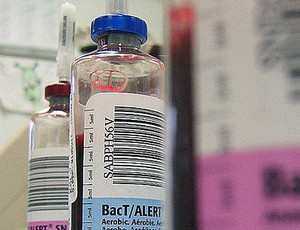
Aim of the study was to analyze the frequency of BCs, the rate of central line-associated bloodstream infections (CLABSIs) and to study the association between both parameters on intensive care units in Germany over time” Salm et al (2018). Abstract: Background: Blood cultures (BCs) are the gold standard for diagnosing sepsis and are prerequisite for […]
Performance of peripheral intravenous catheterization in relation to work experience
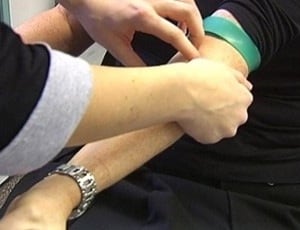
The aim of this study was to explore general registered nurses’ (RNs) assessments of problems associated with difficult peripheral intravenous catheterization (PIVC) depending on their years of working experience, that is, those who had worked 3 years or less and those who had worked more than 3 years” Sandström and Forsberg (2018). Abstract: The aim […]
How to use topical anesthetics and distraction for peripheral IV catheter placement

The purpose of this article is to educate nursing staff of the importance of using topical analgesics such as LMX4 and EMLA, needle free lidocaine injections, as well as different methods of distraction to successfully place a peripheral intravenous catheter in a pediatric patient on first attempt” Martin (2018). Abstract: Placing a peripheral intravenous catheter […]
Review of central venous cannulation and Seldinger technique

Central venous cannulation using the basic principles of the Seldinger technique is a core skill for anaesthetists and critical care doctors in situations where intravenous access is difficult or multiple infusions are required” Williamson and Cattlin (2018). Abstract: Central venous cannulation using the basic principles of the Seldinger technique is a core skill for anaesthetists […]
Microcatheter access port for intra-arterial therapy of liver cancer

To develop an implantable port in which a microcatheter can be inserted for a combination therapy of repeated transarterial chemoembolization (TACE) and hepatic arterial infusion chemotherapy (HAIC) for advanced liver cancer” Fukuoka et al (2018). Abstract: PURPOSE: To develop an implantable port in which a microcatheter can be inserted for a combination therapy of repeated […]
Improving access to appropriate post-exposure doxycycline for Lyme disease prophylaxis
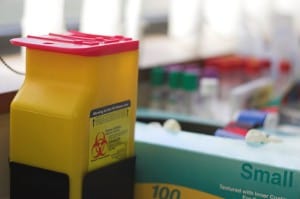
We challenge restrictions to the appropriate and timely provision of therapy for Lyme disease and encourage the use of community pharmacists in managing these patients” Dering-Anderson and Adams (2018). Abstract: The transmission of Borrelia burgdorferi to humans through tick bites results in Lyme disease. Appropriate therapy for Lyme disease is antibacterial drugs, most often doxycycline. […]
Predictors of tunneled hemodialysis catheter infection or dysfunction

To assess the ability of various clinical factors to predict infection or dysfunction of tunneled hemodialysis catheters” Coker et al (2018). Abstract: PURPOSE: To assess the ability of various clinical factors to predict infection or dysfunction of tunneled hemodialysis catheters. METHODS: A retrospective review of all adult patients who had a tunneled hemodialysis catheter placed […]
What are the three most common phlebotomy errors?
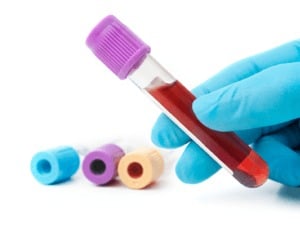
Our objective was to determine the compliance rate of the different steps of the phlebotomy procedure and propose corrective actions” Merzougui et al (2018). Abstract: INTRODUCTION: Phlebotomy is taking a venous blood sample for a medical biology analysis. If the taking of a sample is poorly executed, the results for this sample may be inaccurate […]
Effects of serial phlebotomy on vascular endothelial function

Four serial phlebotomy procedures over six months with or without intravenous iron supplementation did not alter vascular endothelial function in the brachial artery when compared with sham phlebotomy” Jelani et al (2018). Abstract: INTRODUCTION: Blood donation has been proposed as a potential therapy to reduce risk of cardiovascular disease, but the effects of phlebotomy on […]
Phlebotomy tube interference with nuclear magnetic resonance (NMR) lipoprotein subclass analysis

Lipoprotein subclass analysis by nuclear magnetic resonance (NMR) can be used in risk assessment of atherosclerotic cardiovascular disease (ASCVD). There is little information in the literature regarding phlebotomy tube interferences with NMR testing” Needham et al (2018). Abstract: BACKGROUND: Lipoprotein subclass analysis by nuclear magnetic resonance (NMR) can be used in risk assessment of atherosclerotic […]
Hand hygiene compliance factors among infection control nurses

We assessed the current status of knowledge, perception, attitude, and role model regarding hand hygiene (HH) among infection control nurses (ICNs) and identified the factors influencing these variables” Oh (2018). Abstract: Background: We assessed the current status of knowledge, perception, attitude, and role model regarding hand hygiene (HH) among infection control nurses (ICNs) and identified […]

